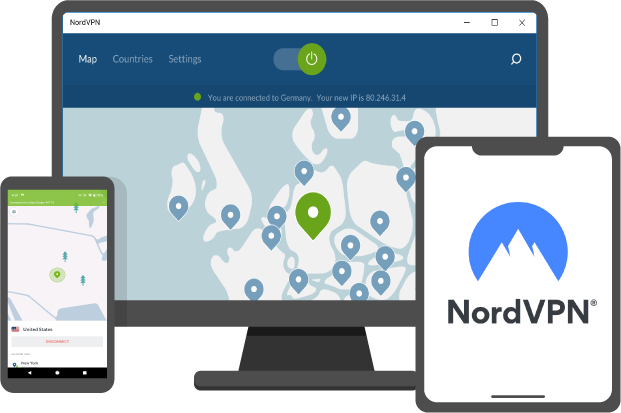You can use 2.4 GHz for devices further away from your router and 5 GHz for devices closer to your router. 2.4 GHz and 5 GHz both are frequency bands, and both names belong to the same router. Your WiFi network list contains identical names except for one ending with 2.4 and the other with 5.
The major difference between the two frequencies are:
- Coverage
- Speed
2.4 GHz offers a wider coverage but a slower speed.
5 GHz offers shorter coverage but faster speeds.
2.4 GHz Frequency Band
Based on the frequency bands, the signals can penetrate solid objects like walls and floors. 2.4 GHz gives you a stronger wifi signal in large and wide space. Since 2.4 GHz is a low frequency, it can easily move about through the walls and floors of your establishment.
Since it offers a stronger signal in a wider space, the transmission of data is slow. 2.4 GHz is capable of carrying speeds between the ranges of 400 Mbps to 600 Mbps. Also, the transmission of data at a 2.4 GHz frequency can get interfered with by other devices operating at the same frequency like microwave ovens and Bluetooth headphones.
When multiple devices use the same radio spaces, overcrowding occurs. 2.4 GHz only has 11 channels for devices to use. So, if the number of devices increases, overcrowding will slow down your internet speed.
5 GHz Frequency Band
You should know that the higher the frequency the faster the data will transmit. Higher frequencies are not able to travel well through walls and floors. That’s why 5 GHz have weaker signals, short coverage area, but offers great speeds.
5 GHz can clock your wifi speeds up to 1,300 Mbps. The fewer devices connected to your 5 GHz router, the faster the speed you’ll get.
Also, 5 GHz offers 23 channels for devices to use which prevent factors like overcrowding.
Which is better? 2.4 GHz or 5 GHz
To determine which frequency is better to use and what will benefit you the most, you need to first pinpoint various factors as mentioned below:
- Area
- Distance
- Density
- Activity
The Area you want to cover for your Wifi needs
The first factor which you need to keep in mind when choosing between 2.4 GHz and 5 GHz routers in the area of your usage. If you have a small home or a room, then you should use a 5 GHz frequency router, however, if you have a large house or a business office, then 2.4 GHz will work best for you as it has more coverage area.
Distance of your devices
Devices that are closer to the router will work best with 5 GHz and devices which are farther away from the router will be more compatible with 2.4 GHz frequency.
Density: Number of connected devices
If you have a large number of devices connected to your 2.4 GHz frequency, then the connection will get congested and you’ll suffer from slow speeds. However, the 2.4 GHz frequency works best when it has a max number of 11 devices connected to its network at once.
With a 5 GHz frequency, you can connect up to 23 devices and still the signal strength will not fall. The number of channels available depends on your regulatory domain. If there is a lot of interference and the speeds are slow, use the 5 GHz band.
Type of Activity
Since the transmission of data with 2.4 GHz is slower in comparison to 5 GHz. That’s why 2.4 GHz is better suited for low-bandwidth activities like browsing over the internet or doing simple R&D.
However, if you want to stream videos, movies, and TV shows online and play online games, then you need a frequency that is capable of handling higher data bandwidths like 5 GHz. Also, if you have a VPN integrated into your device, then you should use 5 GHz.
What are Frequency Bands?
You might be familiar with frequency bands, these are the radio waves that are used for the transmission of data. Most of the wifi routers operate on 2.4 GHz and 5 GHz frequency bands to connect your devices with the internet.
Most of the routers initially were integrated with 2.4 GHz frequency bands, however, nowadays almost every router now comes with the option of 5 GHz frequency and is made available for consumer usage.
How to check what Frequency Band I’m using?
The default network name has a number at the end. If it is ‘2’ or ‘2.4’ then this means that your wifi network contains a 2.4 GHz, frequency band.
On the other hand, if your default network name contains ‘5’ at the end, then this means that your wifi router is optimized to a 5 GHz frequency band.
You can check your router’s original frequency band by going into your router’s settings and checking the wifi name corresponding to each frequency band.
ExpressVPN Router
A VPN router helps you protect every device connected to your wifi connection and you can enjoy all the benefits which a VPN provides. You can simply install ExpressVPN’s app on your router and you are good to go.
With ExpressVPN router you’ll get:
- Connect devices to various VPN locations.
- Protect your online activity by encrypting your internet traffic.
- Get access to restricted content over the internet (unlock geo-locked content).
- Connect an unlimited number of devices.
- Protection against threats like SSID & KRACK.
Final Verdict
To put it simply, if you want a better range then go for 2.4 GHz and if you want a high-performance frequency band then 5 GHz is the one for you. 5 GHz is the newer technology, and has the capability of cutting through network clutter and interference. This helps 5 GHz to maximize the overall network performance. However, 5 GHz has a limited reach and it can cause issues if you are using your wifi router for a wider area.






